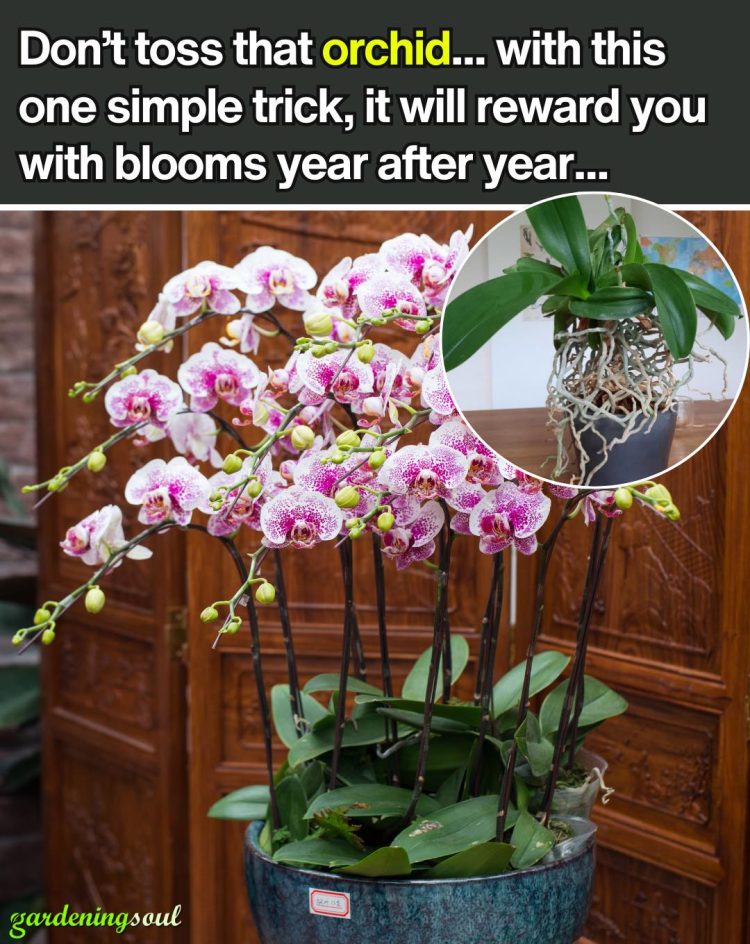Orchids are often considered mysterious plants – breathtaking when in bloom, frustrating when they stop.
For many people, receiving an orchid as a gift or buying one in full flower is the beginning of a short relationship. When the last petal falls, most orchids are sadly thrown away, thought to be “finished.”
But here’s the truth: your orchid is not dead when it stops blooming – it’s only resting. With the right care, that same orchid can bloom again and again for many years, sometimes even decades.
Understanding Orchid Bloom Cycles
To unlock reblooming, you first need to understand the natural rhythm of orchids.
Unlike many houseplants, orchids follow a distinct cycle:
1. Bloom Phase
Orchids (especially Phalaenopsis, the most common type) typically bloom once or twice a year.
Blooms last from 6 weeks up to 3 months, depending on the species and care.
During this stage, orchids focus energy on flowers rather than new leaves or roots.
2. Resting (Dormant) Phase
After the blooms drop, orchids enter a recovery phase.
This is when they store energy, rebuild root systems, and prepare internally for the next bloom.
To the untrained eye, the plant looks plain, but it’s recharging.
3. Spike Initiation Phase
When conditions are right (light, temperature, and nutrients), orchids push out new flower spikes.
This is the signal that reblooming is on the way.
Key takeaway: If you treat your orchid correctly after it blooms, it will reward you with a new cycle of flowers.
Why Orchids Stop Blooming
When orchids refuse to rebloom, the problem usually lies in one of these factors:
Light deficiency: Orchids need bright, indirect light. A north-facing windowsill rarely provides enough.
No temperature variation: Without a slight difference between day and night, orchids don’t receive the signal to bloom.
Improper watering: Too much water suffocates roots; too little dries them out.
Nutrient imbalance: Orchids require specific nutrients for flower production.
Neglected rest period: Orchids need time to recover before producing flowers again.
If you’ve been caring for an orchid and it hasn’t bloomed for over a year, it’s not hopeless – it simply hasn’t received the right signals.
The Secret Trick: Nighttime Temperature Drop
Here’s the #1 proven secret to trigger orchid reblooming: Expose your orchid to a nighttime temperature drop of 10°F (5°C) for 2–4 weeks.
Why This Works
In their natural habitats (tropical and subtropical regions), orchids experience warm days and cooler nights.
That change signals to the plant: It’s time to reproduce. Indoors, where we keep steady temperatures, orchids miss this cue.
By introducing a nighttime drop, you replicate nature’s signal – and the orchid responds by sending up a new flower spike.
How to Do It
see continuation on next page
